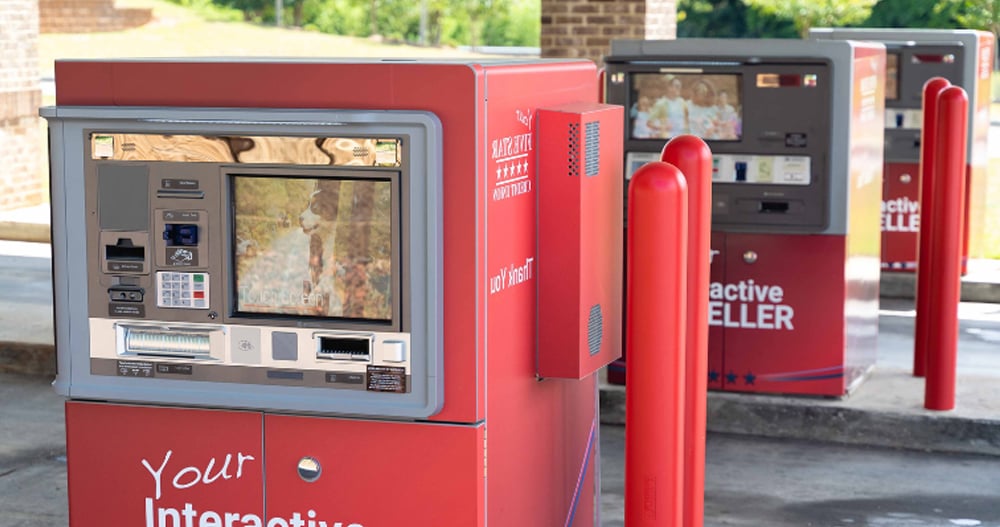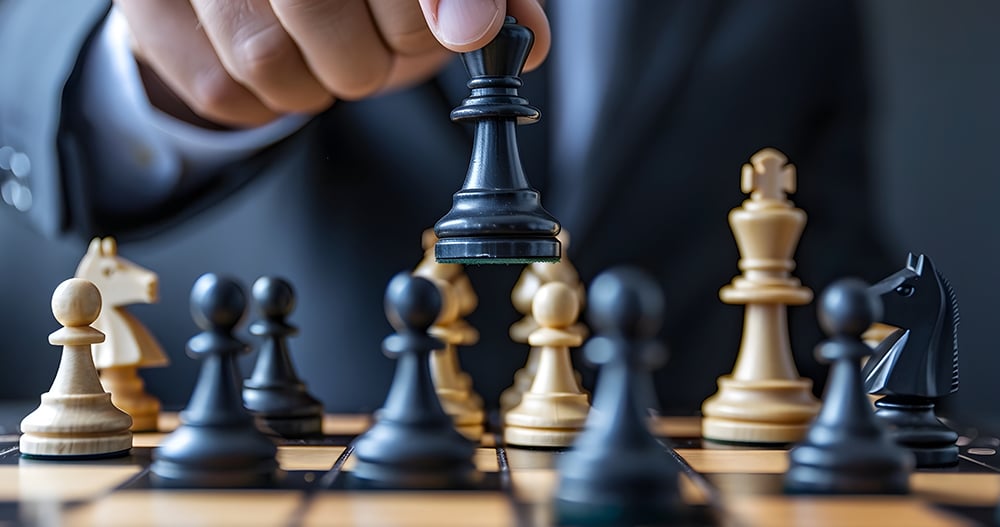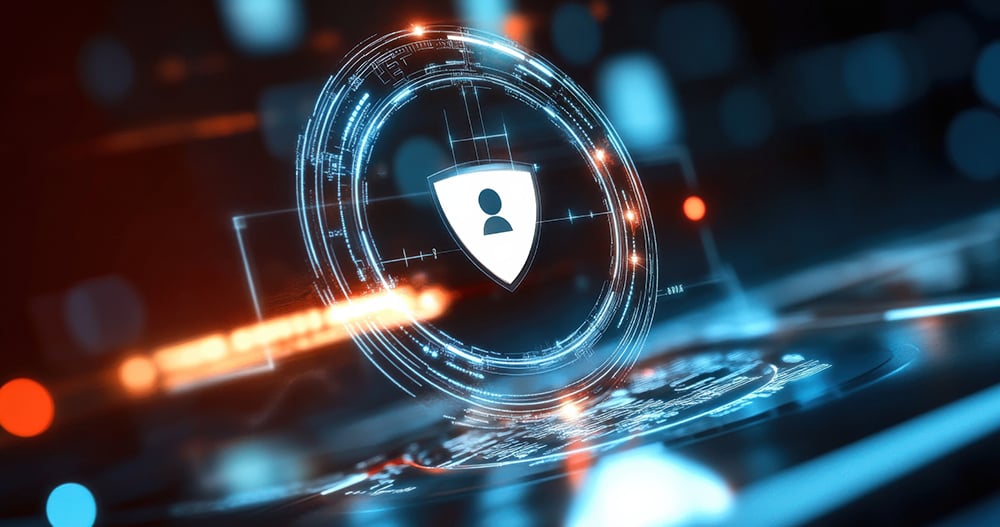ITMs vs. ATMs: Smarter Banking Starts with the Right Choice
Discover how modern financial institutions cut costs, improve service, and prepare for the future, one self-service decision at a time.
Take A Copy With You
Download this guide as a PDF.

The financial industry is in the midst of a rapid evolution. From increasing compliance costs and shifting consumer expectations to ongoing staffing challenges, financial institutions must find smarter, more efficient ways to serve their customers.
Interactive Teller Machines (ITMs) have emerged as a key component of modern self-service banking, providing institutions with the ability to enhance service, optimize branch operations, and improve efficiency.
But is investing in ITMs the right move for your institution?
No matter where you are in your ITM evaluation—whether you’re weighing the transition from ATMs or actively planning an ITM rollout—this guide is designed to provide clear, practical insights to help you make informed decisions.
From understanding core integration and self-service capabilities to evaluating total cost of ownership and implementation challenges, this guide will equip you with the knowledge needed to navigate the ITM landscape.
If you have additional questions along the way, our team is always available to help.
-
Why ITM Technology
-
Reducing Consumer Friction
-
Optimizing Staffing
-
Branch Optimization
-
ITM Adoption
-
Restructuring Banking Fees
-
Increased Operational Efficiency
-
Meeting Customer Expectations
-
Rethinking Remote Banking
-
Competitive Advantage
-
Expanding Market Presence
-
Enhancing Security
-
Cost Benefits
-
Cons of ITM Adoption
-
Staffing Challenges
-
Video Integration Challenges
-
Core Integration Challenges
-
Core Agreements
Part I. Why ITM Technology Is in Such High Demand
Financial institutions today are facing rising compliance costs, staffing shortages, and increasing pressure to modernize branch operations. ITMs have been on the market for over 15 years, but today, their role is evolving beyond just an alternative to ATMs. Institutions are no longer just asking if they should invest in ITMs—but rather, how and when ITMs should fit into their long-term strategy.
With a growing emphasis on core integration, automation, and operational efficiency, financial leaders are considering:
-
Should we invest in ITM-ready ATMs now to ensure future flexibility?
-
How can ITMs help offset staffing challenges while maintaining a strong customer experience?
-
What role should ITMs play in reducing branch operational costs and enhancing self-service capabilities?
To help answer these questions, the next section explores the four primary drivers behind ITM adoption—and how they could impact your bottom line if implemented strategically.

Driver #1: ITMs as a Tool for Operational Efficiency & Competitiveness
For financial institutions today, operational efficiency is no longer optional—it’s a necessity. Rising compliance costs, increasing staffing challenges, and industry consolidation are forcing banks and credit unions to rethink how they operate. ITMs have become a critical tool, not just to keep up with innovation, but to enhance service, reduce costs, and remain competitive in an evolving market.
Institutions are no longer just trying to “catch up” to other industries in technology adoption; they are actively seeking ways to optimize resources while maintaining a high level of customer service. ITMs allow financial institutions to shift routine transactions to self-service while freeing branch staff to focus on revenue-generating activities like loans, advisory services, and account growth.
Additionally, as financial institutions merge and consolidate, the need for efficient, scalable self-service solutions has never been greater. ITMs provide cost-effective ways to maintain service in key markets while reducing reliance on large, expensive branch networks.
By integrating ITMs as part of a strategic operational model, financial institutions can streamline processes, enhance customer experiences, and position themselves for long-term success in a rapidly changing industry.
Driver #2: Reducing Consumer Friction & Meeting Convenience Expectations
The rise of digital convenience has permanently changed consumer expectations—including in banking. Today’s customers expect seamless, on-demand access to financial services, free from unnecessary friction. Whether ordering a product online, checking into a hotel with a mobile key, or instantly transferring money between accounts, consumers are accustomed to immediate, self-service options.
For financial institutions, this means the traditional branch model no longer meets modern expectations. Customers don’t want to wait in line, be constrained by branch hours, or rely solely on in-person interactions for routine banking tasks. When basic transactions take too long, customers will look elsewhere.
ITMs help bridge the gap between digital banking and in-person service by enabling customers to handle deposits, withdrawals, loan payments, and account inquiries—on their schedule, not the bank’s. Think about mobile deposits. Customers now expect to snap a picture of a check and have it instantly credited. ITMs extend that same expectation of speed and convenience to physical banking interactions.
Loyalty today is built on ease of service. If banking interactions are slow or cumbersome, customers won’t hesitate to switch institutions. ITMs allow financial institutions to meet these rising expectations, reduce transaction friction, and retain customers in an era where convenience is the ultimate differentiator.

Driver #3: Optimizing Staffing & Managing Rising Costs
The cost of operating a branch has never been higher. Rising wages, staffing shortages, and declining in-person transaction volumes are forcing financial institutions to rethink how they allocate resources.
The Reality of Branch Staffing Today
Before 2020, a $12-per-hour branch teller typically handled 5,000 to 10,000 transactions per month. Today, that same teller earns $17–$20 per hour but only handles 2,000 to 5,000 transactions per month. Institutions are paying more for less, as customer behavior continues shifting toward self-service and digital banking.
Of course, staffing isn’t the only consideration. M&A activity and branch closures are forcing institutions to do more with fewer locations. Without self-service solutions, maintaining service levels will become increasingly difficult.
How ITMs Help Solve This Challenge
ITMs provide a cost-effective way to extend service hours, reduce staffing burdens, and improve operational efficiency. Instead of relying solely on in-branch tellers to handle routine transactions, ITMs allow institutions to:
-
Optimize labor costs: Shifting simple transactions to ITMs reduces teller workload, allowing staff to focus on higher-value activities like loans and advisory services.
-
Extend service hours without increasing payroll: An ITM-enabled drive-thru can provide after-hours banking, meeting customer needs without requiring additional staffing.
-
Reduce customer frustration: Consumers now expect self-service options and don’t want to be forced into waiting for a teller for routine transactions.
The Shift in Customer Behavior
While some institutions previously worried that customers would resist ITMs, the data proves otherwise. Customers (especially younger generations) now prefer fast, frictionless transactions. They don’t want to wait in line for simple banking tasks. Your employees are still your differentiator, but their time should be spent on revenue-driving, relationship-building interactions—not cashing checks and processing deposits.
Bottom line? Institutions that don’t rethink staffing models will continue paying more for declining transaction volume. The financial leaders who optimize with ITMs will reduce costs, increase efficiency, and improve customer retention—without sacrificing service.
Driver #4: Branch Real Estate & Footprint Optimization
Financial institutions are under increasing pressure to reduce operational costs while maintaining service levels. As branch transaction volumes decline, many institutions are reevaluating their real estate strategy—shifting from large, full-service branches to smaller, technology-enabled locations that maximize efficiency.
The Shift to Smaller, Smarter Branches
Traditionally, financial institutions operated 5,000+ square foot branches to accommodate high foot traffic and in-person transactions. Today, with the rise of digital banking and self-service adoption, many institutions are downsizing to 1,500–3,000 square foot branch models—a shift that reduces overhead while still delivering high-value services.
How ITMs Support Branch Optimization
ITMs play a critical role in helping financial institutions:
-
Maintain service in key locations while reducing branch size and cost.
-
Deploy "leave-behind" ITM solutions in areas where full branches close, allowing institutions to retain a presence without the expense of staffing a location.
-
Support modern branch designs that emphasize advisory services while shifting routine transactions to self-service technology.
A New Approach to Physical Banking
Consumers still value in-person financial services, but they no longer need full-service branches for routine transactions. Instead, modern banking strategies focus on maximizing efficiency, reducing real estate costs, and ensuring staff focus on revenue-generating activities. ITMs allow institutions to strike the right balance—retaining customer access while creating a more sustainable, future-ready branch network.
Institutions that embrace this shift will position themselves for long-term growth, stronger customer relationships, and greater operational efficiency. Those that hesitate may find it harder to keep up with shifting consumer expectations. But for those willing to evolve, this moment presents a powerful opportunity to build a smarter, more profitable branch model.

Part II. Is ITM Adoption the Right Fit for Your Institution?
ITMs offer significant operational benefits, but they aren’t a one-size-fits-all solution. Whether ITMs are the right move for your institution depends on your strategic priorities, customer base, and long-term growth plans.
In this section, we’ll explore the key factors that determine whether ITMs align with your business model—covering cost considerations, real estate strategy, revenue opportunities, operational efficiency, and evolving consumer expectations.
By the end, you’ll have a clearer understanding of whether ITMs should play a role in your institution’s future—and how they can best support your financial and service objectives.
1. Cost Savings & Strategic Investment
Investing in ITMs is more than a cost reduction strategy—it’s about maximizing efficiency while aligning costs with long-term strategy. ITMs offer a clear financial advantage by lowering transaction costs, optimizing staffing, and supporting real estate downsizing.
Breaking Down the Cost Per Transaction
The cost of a teller-assisted transaction can range from $4–$8 per interaction, depending on wages and overhead. In contrast:
-
ATM transactions typically cost $0.75–$1.25.
-
ITM transactions fall somewhere in between, offering advanced functionality at a fraction of the cost of traditional tellers.
By shifting routine transactions to ITMs, financial institutions can reduce reliance on high-cost labor while maintaining high service levels.
Camry vs. Escalade: Finding the Right Fit
Not every institution needs the "Escalade" level of ITM functionality. Some will benefit most from basic automation (Camry), while others will want fully integrated ITMs that replace in-branch transactions (Escalade). The key is matching ITM investment to institutional goals.
Beyond Transactions: Long-Term Cost Efficiency
ITMs also reduce costs beyond individual transactions:
-
Staffing efficiency: Enable extended service hours without additional payroll. (More detail on this shortly!)
-
Real estate savings: Support branch downsizing without sacrificing customer access.
-
Operational streamlining: Shift tellers to higher-value roles like advisory services.
For institutions focused on cost containment and operational efficiency, ITMs provide a scalable, flexible way to modernize service delivery while reducing long-term expenses.
2. Branch Real Estate Optimization: Cutting Costs While Retaining Access
In the previous chapter, we discussed how financial institutions are rethinking their branch strategy—downsizing physical locations and using ITMs to maintain service while reducing overhead. Now, let’s take a closer look at the direct financial impact of this shift.
Real estate costs continue to rise, making it increasingly expensive to maintain large, full-service branches. ITMs offer a cost-effective way to scale down physical branch space without sacrificing customer service—reducing rent, utilities, and long-term operational expenses.
The Cost Impact of Branch Downsizing
The shift toward smaller, more efficient branches—which we explored in the previous section—doesn’t just impact real estate costs. It also plays a role in how financial institutions rethink their revenue models, including banking fees. As branches become more streamlined, institutions have an opportunity to restructure fee models in ways that better align with modern consumer behavior.
How ITMs Reduce Real Estate Costs
By integrating ITMs into branch networks, financial institutions can:
-
Reduce square footage, lowering rent, utilities, and facility maintenance costs.
-
Expand service presence with fewer full branches, reducing the financial burden of staffing and operating multiple locations.
-
Lower overall operational costs by shifting transactions to self-service, allowing smaller branches to function efficiently.
Smaller Footprint, Bigger Savings
Instead of maintaining large, underutilized spaces, institutions are leveraging ITMs to do more with less—cutting real estate expenses while still providing accessible banking services. Those that embrace this shift can build a leaner, more financially sustainable branch network, positioning themselves for long-term success.
For institutions still evaluating their approach, ITMs offer a flexible path forward, allowing for gradual optimization without sacrificing customer access.

3. Restructuring Banking Fees to Align with Modern Revenue Models
Financial institutions have long relied on fee structures—such as overdraft charges and maintenance fees—to generate revenue. However, consumer expectations and regulatory pressures are forcing a shift in how these fees are structured, leading many institutions to rethink their approach.
With increased public scrutiny and regulatory changes, financial institutions are facing growing pressure to reduce or eliminate traditional fees. Overdraft fees, in particular, have been widely criticized, leading many banks to scale them back or remove them altogether. While this shift benefits consumers, it has left institutions searching for new ways to maintain revenue streams without relying on penalty-based fees.
How ITMs Can Support Fee Restructuring
ITMs provide financial institutions with alternative ways to offset lost fee revenue by optimizing transaction costs and expanding service offerings.
-
Lower operational costs per transaction allow institutions to adjust pricing structures while maintaining profitability.
-
Flexible fee models can be introduced for premium ITM transactions, such as extended service hours or advanced account management options.
-
Revenue-generating services, such as small business banking transactions, loan application processing, or specialized advisory services, can be shifted to ITM-driven interactions.
A Sustainable Approach to Fee Strategy
As financial institutions work to balance consumer-friendly fee structures with sustainable revenue models, ITMs offer a way to reduce reliance on penalty-driven fees while maintaining financial health. Those that embrace this shift will be better positioned to adapt to industry changes and provide cost-effective, service-driven solutions for their customers.
4. Increased Operational Efficiency & Smarter Staffing
Most financial institutions don’t have a teller shortage problem, they have a teller utilization problem. Too many employees are stuck handling routine transactions instead of focusing on revenue-generating activities like loans, advisory services, and cross-selling.
ITMs solve this by shifting 80–90% of teller transactions—deposits, withdrawals, loan payments, and check cashing—to self-service. This does more than reduce payroll costs—it frees up your team to build relationships, offer better financial guidance, and close more business.
How ITMs Improve Operational Efficiency
ITMs create a smarter, more efficient branch environment. By shifting routine transactions away from the teller line, financial institutions can improve both staff productivity and customer experience:
-
Reduce teller transaction volume so employees can focus on high-value interactions.
-
Extend service hours without increasing payroll, keeping critical services available when customers need them.
-
Eliminate bottlenecks in branches and drive-thrus, improving customer experience while reducing operating costs.
ITMs don’t replace your people. They give them the ability to focus on what actually matters—helping customers, building relationships, and growing the business. Instead of spending hours processing routine transactions, your team can spend their time advising customers, uncovering new opportunities, and strengthening loyalty.
The result? A branch that runs smarter, not just leaner. ITMs handle repetitive tasks so your people can do the work that truly adds value—both for your institution and the customers you serve.

5. Meeting Customer Expectations Without Increasing Costs
Customers want banking on their schedule, not yours. They don’t want to wait in line to cash a check or visit a branch at specific hours just to handle routine tasks. ITMs bridge the gap between digital banking and in-person service, giving customers more flexibility without forcing institutions to expand staff or locations.
How ITMs Improve Convenience for Customers & Institutions
Modern banking isn’t just about providing services—it’s about providing them when and how customers need them. ITMs allow financial institutions to deliver more flexible, accessible banking without sacrificing service quality:
-
Reduce reliance on teller availability for routine transactions, minimizing wait times and improving efficiency.
-
Enable extended banking hours—weekends, early mornings, late nights—without staffing full branches.
-
Provide hybrid service options, such as self-service for quick tasks, with remote teller support when needed.
Customers today expect banking to fit into their lives—not the other way around. They don’t have time to rearrange their schedules just to visit a branch during limited hours, wait in long lines, or rush to make a deposit before closing.
ITMs help financial institutions bridge the gap between digital convenience and in-person service. Whether it’s a parent handling errands after work, a business owner making late-night deposits, or a member who prefers self-service but still wants access to live support, ITMs provide flexibility without sacrificing quality.
The best part? Customers still have a choice. They can use self-service when they need speed and efficiency, or speak to a remote teller when they need guidance. Meanwhile, financial institutions can offer expanded service without the burden of increasing staff or operating costs. With ITMs, everyone wins—your institution, your team, and the customers who rely on you.
Rethinking Remote Banking Strategies
Not every financial institution needs a full-service branch in every market, but maintaining customer access remains critical. As more institutions rethink their remote banking strategies, the question isn’t only where to place ITMs. It’s also about striking the right balance between self-service, staffed, and outsourced solutions to optimize costs and service coverage.
This section explores the different ways institutions are expanding access beyond the traditional branch model, including strategic ITM placement, alternatives to outdated drive-thru technologies, and the growing trend of outsourcing ATM/ITM management.
Phasing Out Pneumatic Tubes: Why Institutions Are Moving On
For decades, pneumatic tube systems were a standard feature in drive-thru banking. While they provided a way to extend teller services, they have always had operational and customer experience limitations—including slow transaction speeds, high maintenance costs, and dependency on physical branch proximity.
Key Issues with Pneumatic Tubes:
-
Longer transaction times: Tube-based transactions typically take 5 to 6 minutes, while ITM-based video transactions can be completed in 2 to 3 minutes—or even faster for self-service transactions.
-
Increased maintenance demands: Pneumatic tube systems require frequent servicing, and failures cause significant downtime.
-
Limited functionality: These systems are only useful for basic transactions and don’t support modern banking needs like digital account management or remote advisory services.
The ITM Alternative: A Smarter Drive-Thru Experience
ITMs solve the problems tubes never could—more functionality, more flexibility, and no outdated infrastructure:
-
Faster, more seamless transactions that reduce customer frustration and wait times.
-
Centralized or remote teller support, reducing staffing burdens at individual locations.
-
A more flexible, future-proof drive-thru model, allowing institutions to repurpose space and optimize customer flow.
Financial institutions making this transition also benefit from lower long-term costs and the ability to modernize drive-thru banking without the limitations of outdated technology.
However, ITM placement strategy isn’t one-size-fits-all. So, you’ll need to ask yourself: “What’s our primary goal—cost reduction, expanding reach, or both?” This will determine whether a standalone ITM, a remote video-banking hub, or an outsourced solution makes the most sense.
Expanding Service with Branch-Like ITMs
A strong local presence doesn’t have to mean a full-service branch. Strategically placed ITMs allow financial institutions to maintain customer access while reducing the overhead of traditional locations. Instead of relying solely on brick-and-mortar branches, banks and credit unions can place ITMs in key areas where customers already live, work, and do business—ensuring financial services remain within reach.
Where ITMs Can Expand Reach
-
High-traffic retail centers where customers already conduct daily business, making banking more convenient.
-
Underbanked areas where full branches aren’t financially viable, but maintaining service access is critical.
-
Previously closed branch locations where institutions want to maintain brand presence and customer engagement.
ITMs provide new ways to serve customers on their terms. A business owner making a late-night deposit, a commuter needing cash early in the morning, or a member who prefers self-service for everyday transactions can all benefit from an ITM’s flexibility. Instead of forcing customers to fit their schedules around a branch, ITMs bring the branch experience to them.
For financial institutions, this means less strain on branch operations, optimized real estate costs, and an expanded footprint, without the staffing burden of a full-service location. It’s a smarter, more flexible way to stay connected to the communities you serve.

6. Competitive Advantage Through Innovation
Financial institutions that adopt ITMs aren’t just modernizing their operations—they’re positioning themselves as innovators in their communities. As banking preferences evolve, ITMs provide a strategic advantage by enhancing accessibility, improving service delivery, and reinforcing a forward-thinking brand image.
Expanding Access & Serving Underserved Markets
Standalone ITMs create opportunities to serve low-to-moderate-income (LMI) communities where a full-service branch may not be financially viable. By strategically placing ITMs in these areas, institutions can increase financial inclusion, provide convenient self-service banking, and strengthen relationships with customers who might otherwise turn to competitors.
ITMs as a Brand & Customer Experience Differentiator
Customers today expect convenience, accessibility, and seamless banking interactions. Institutions that leverage ITMs effectively can:
-
Differentiate themselves from competitors by offering extended service hours and self-service banking in high-demand areas.
-
Reinforce their brand as a technology-forward institution that prioritizes customer needs.
-
Improve customer retention by reducing friction in everyday transactions, making banking easier and more accessible.
ITMs don’t just help financial institutions keep up with innovation—they allow them to lead the way in redefining modern banking experiences. Institutions that embrace ITMs today will be the ones defining modern banking for years to come—while those that hesitate risk losing relevance in an increasingly self-service-driven world.
7. Expanding Market Presence with ITMs
For financial institutions looking to grow, expansion doesn’t always mean building more branches. The right ITM strategy can extend market presence in a cost-effective, scalable way—without the need for full-service locations. But choosing where and how to deploy ITMs is just as important as deciding to invest in them in the first place.
Strategic ITM Placement: Defining Your Institution’s Goals
Not all ITM placements serve the same purpose. Institutions need to evaluate what they’re trying to achieve with ITM expansion:
-
Customer retention: Keeping a presence in areas where branches have closed.
-
New market growth: Expanding into locations where a branch isn’t feasible but demand exists.
-
Cost containment: Reducing reliance on full-service branches while maintaining accessibility.
Where ITMs Can Expand Market Reach
When placed strategically, ITMs allow financial institutions to maintain visibility in key markets while optimizing costs. Here are some of the most effective locations for ITM deployment:
-
High-traffic retail centers where customers already conduct daily business.
-
Underbanked areas where traditional branches aren’t financially viable, but service demand remains.
-
College campuses, transportation hubs, and business districts where convenience is a competitive advantage.
A Smarter Way to Grow Without Overextending
Institutions that deploy ITMs with a clear market strategy can increase visibility, improve customer retention, and optimize operational costs—all while keeping a strong presence in key locations. Whether the goal is customer retention, market expansion, or cost savings, ITMs offer a flexible, efficient way to scale without unnecessary overhead.

8. Enhancing Security with ITM Technology
Security isn’t just about protecting physical cash—it’s about safeguarding transactions, reducing fraud, and minimizing risk exposure for both financial institutions and customers. ITMs provide multiple security advantages by limiting direct teller cash handling, improving transaction monitoring, and offering built-in fraud prevention measures:
-
Reduce physical cash exposure by eliminating teller drawers, securing funds inside the machine, and limiting access to high-risk areas.
-
Minimize robbery risks by shifting transactions to self-service or remote teller assistance, reducing on-site cash handling.
-
Prevent fraud with advanced security features like real-time check verification, anti-skimming technology, and encrypted transaction processing.
By transitioning to ITMs, financial institutions not only reduce physical security risks but also enhance their ability to prevent fraudulent activity. The result is a safer, more secure banking experience for both customers and employees.
9. The Business & Cost Benefits of Cash Recycling
Cash recycling is one of the most effective ways for financial institutions to reduce operating costs, improve cash availability, and enhance business banking services—all while maximizing their ITM investment. By reducing armored car reliance and enabling businesses to manage cash flow more efficiently, ITMs with cash recycling provide both cost savings and revenue-generating opportunities.
Reducing Armored Car Dependence & Service Disruptions
One of the biggest inefficiencies in cash management is over-reliance on armored car services. These vendors often introduce:
-
Cash loading errors: Straps left on money, misloaded bills, and improper handling can take machines out of service.
-
Unnecessary trips: Institutions pay for frequent pickups and deliveries, even when cash levels are manageable.
-
Higher risk of service downtime: Each visit increases the chance of machine issues that disrupt customer access.
With cash recycling, financial institutions can eliminate one, if not two, armored car visits per month, reducing expenses while improving uptime. Fewer disruptions mean better customer service, lower operational costs, and less reliance on third-party vendors.
A Growth Opportunity: Supporting Cash-Heavy Merchants
Cash recycling doesn’t just improve efficiency—it also provides a high-value service for cash-heavy businesses. Small businesses, retail stores, and service-based industries rely on consistent access to deposit cash and withdraw smaller denominations for their daily operations.
By offering ITMs with cash recycling capabilities, financial institutions can:
-
Allow businesses to make large cash deposits safely and conveniently.
-
Enable small merchants to withdraw specific denominations (e.g., $5s and $1s) to stock their registers.
-
Differentiate themselves by offering a self-service cash management solution that competitors may not provide.
For institutions already investing in ITMs, adding cash recycling is a natural extension that maximizes efficiency and expands service offerings.
No Certification Required: Eliminating Adoption Barriers
Some financial institutions hesitate to adopt cash recycling due to concerns about network certification requirements. However, certification is not mandatory—institutions can implement cash recycling with minor back-end adjustments to balance deposits and withdrawals. This means institutions can take advantage of cash recycling without needing complex upgrades to their existing systems.
The Bottom Line
For financial institutions still relying on frequent armored car pickups, manual cash handling, and outdated cash management processes, cash recycling offers a smarter alternative. By integrating ITMs with cash recycling, institutions can cut costs, reduce service downtime, and provide businesses with a powerful tool to manage their cash flow efficiently.
Those that adopt this strategy won’t just save money—they’ll create new revenue opportunities, strengthen business banking relationships, and build a more efficient, future-ready branch network.

What Are the Cons of ITM Adoption?
1. High Cost of Entry—When ITMs Make Financial Sense
ITMs require a higher upfront investment than ATMs, and for some financial institutions, the cost may not align with short-term budgets or growth strategies. Beyond the hardware itself, ITM adoption often includes:
-
Network and infrastructure upgrades to support core integration or remote teller functionality.
-
Staffing adjustments to manage remote interactions or extended service hours.
-
Call center setup or expansion if video teller support is required.
Because of these additional costs, institutions must evaluate whether ITMs align with their long-term service model. For those looking to replace or optimize existing branches, ITMs can provide substantial savings over time.
When ITMs Provide ROI
While the initial cost is high, institutions that deploy ITMs at scale or as part of a branch transformation strategy often see significant returns.
For example, a financial institution considering a new branch in a high-growth suburb might realize that a network of ITMs placed in key locations could provide similar coverage at a fraction of the cost. Instead of staffing and maintaining a full-service location, they could extend service hours, improve accessibility, and lower long-term operational expenses.
ITMs provide the most value when they:
-
Offset branch operational costs by reducing the need for full-service locations.
-
Improve transaction efficiency by shifting high-cost teller interactions to self-service.
-
Expand service hours and reach without requiring new branch openings.
For institutions only considering one or two units, the benefits may be harder to realize. ITMs work best as part of a broader branch transformation strategy—not as standalone replacements for a handful of transactions.

2. Navigating Staffing Challenges with ITMs
ITMs can enhance efficiency, but they also require changes in how financial institutions think about staffing. While ITMs shift routine transactions away from tellers, they don’t eliminate the need for human support—they change when and where staff are needed.
For institutions accustomed to staffing branches Monday through Friday, 9 to 5, adding ITMs with extended service hours can create new scheduling considerations. Some institutions may need to:
-
Adjust teller roles to support both in-person and remote transactions.
-
Expand call center coverage for ITMs using video tellers.
-
Manage peak usage times where self-service transactions fluctuate.
Addressing Staff Concerns & Internal Pushback
One of the biggest challenges isn’t scheduling—it’s staff perception. Some employees may assume that ITMs mean job cuts rather than job evolution. Without clear leadership messaging, this fear can create resistance to ITM adoption.
Institutions that successfully transition to ITMs:
-
Clearly communicate that ITMs enhance, not replace, frontline roles.
-
Train employees for higher-value services like loan consultations, account advisory, and financial planning—tasks that drive revenue and deepen customer relationships.
-
Proactively address concerns by showing how ITMs free up staff to focus on complex transactions rather than routine deposits and withdrawals.
A Smarter Staffing Strategy
ITMs don’t remove the human element from banking—they reposition staff where they can be most valuable. Instead of spending time processing checks and handling cash, employees can focus on customer advisory, relationship-building, and product education.
By preparing teams in advance and structuring staffing models around ITM workflows, institutions can maximize efficiency while maintaining strong customer relationships. ITMs aren’t a staffing challenge—they’re an opportunity to create a more effective, customer-focused branch experience.
3. Managing Video Integration Challenges
When ITMs first hit the market, video teller integration was seen as the natural next step—allowing customers to connect with a remote teller rather than waiting in a branch. But today, many institutions are rethinking that approach as they recognize that video isn’t always the most efficient option.
When Video Slows Transactions Instead of Speeding Them Up
Imagine a customer just wanting to withdraw $40. Instead of tapping a few buttons and getting their cash instantly, they’re forced into a video session, waiting for a remote teller to complete the request. That’s frustrating, unnecessary, and exactly why some institutions are moving away from video dependency.
Financial institutions that rely too heavily on video tellers often experience:
-
Longer transaction times, even simple tasks require live teller intervention.
-
Customer wait times if video tellers aren’t available.
-
Higher operational costs due to the staffing needs of a remote teller center.
Why Many Institutions Are Shifting Toward Core Integration Instead
As more customers expect seamless self-service banking, financial institutions are prioritizing direct core integration over video-heavy ITM models. Core integration allows ITMs to:
-
Process transactions in real time without requiring live teller assistance.
-
Offer a digital banking-like experience with faster, more intuitive self-service.
-
Reduce the need for additional teller staffing, lowering operating costs.
Finding the Right Balance for Your Institution
This doesn’t mean video tellers are obsolete—some institutions still benefit from offering live assistance, especially in certain markets. But instead of defaulting to video for every ITM transaction, financial institutions should ask:
-
Are we using video tellers where they actually add value?
-
Would full self-service ITMs provide a faster, more efficient customer experience?
-
Do our customers prefer human interaction for certain transactions, or is self-service the expectation?
For many institutions, the shift toward fully integrated ITMs is about meeting evolving customer expectations. By evaluating their ITM strategy carefully, financial institutions can ensure they’re providing the right mix of self-service, live support, and operational efficiency.

4. Navigating Core Integration Challenges
One of the biggest advantages of ITMs is their ability to connect directly to a financial institution’s core banking system, allowing for real-time transaction processing. But not all institutions are ready for full ITM core integration, and failing to plan ahead can lead to costly delays, frustrated customers, and underutilized technology.
For institutions with older or restrictive core systems, integrating ITMs may require:
-
Significant development time to establish a secure connection.
-
Additional third-party software to bridge the gap between ITMs and the core.
-
Workarounds for transactions not fully supported by the core.
What Happens When ITMs Aren’t Fully Integrated?
Without direct core integration, ITMs may not be able to process all transactions in real time, leading to:
-
Delayed fund availability for check deposits or transfers.
-
Limited transaction capabilities, forcing customers to visit for certain services.
-
Increased reliance on video tellers to manually complete transactions that should be instant.
For example, an institution might roll out ITMs expecting customers to enjoy instant check deposits. But if their core isn’t fully integrated, those deposits might require off-core processing—forcing customers to wait days for fund availability. Instead of improving efficiency, ITMs in this scenario create more friction for both customers and staff.
Planning Ahead: Avoiding Core Integration Pitfalls
Institutions planning to deploy ITMs should review their core agreements before committing to ensure compatibility. This is especially important if:
-
A core renewal is coming up soon. It may be worth negotiating integration features before signing a new contract.
-
The institution is using an outdated core. A future core upgrade could impact ITM functionality.
-
Off-core or dual-entry transactions are required. These workarounds can create inefficiencies that reduce ITM effectiveness.
ITMs only deliver their full value when they’re seamlessly integrated. Institutions that plan ahead and align their core with their ITM strategy will see better transaction efficiency, improved customer experience, and stronger long-term ROI. Those that don’t may end up with a costly investment that fails to meet expectations.
Assess Your Core Agreements
If your core agreement is up for renewal within the next two years, now is the time to evaluate whether it supports full ITM integration. Many institutions lock into five- to seven-year core contracts without fully considering how their provider’s capabilities will impact future banking technology.
Here are three key questions to ask before your next renewal:
-
Does our core provider offer seamless ITM integration, or will we need third-party workarounds?
-
Will ITM transactions be processed in real time, or will we face delays with off-core settlement?
-
Is our provider willing to commit to a timeline for integration improvements if they aren’t currently available?
Financial institutions that negotiate ITM compatibility upfront avoid costly delays and ensure their technology investments align with long-term growth.
Where Do You Go From Here?
If you’ve made it through this guide, it’s probably because you’re not just kicking the tires. You’re seriously considering the future of your ATM fleet, as well as how ITMs may fit into your broader strategy. You’ve got internal conversations already happening, or at least are ready to initiate them. You also likely have valid questions about timing, staffing, budgets, integrations. Most of all, no matter what direction you ultimately choose, you’re trying to make a smart call that balances innovation with practicality.
You’re not alone in this. These decisions are complex. They touch every corner of your operation. And it’s okay if you don’t have every answer yet.
Here are few questions to bring back to your team, so you can facilitate the right discussions:
-
What role should ITMs play in how we serve our customers over the next three to five years?
-
If we’re sticking with ATMs for now, how do we evolve that fleet in a way that aligns with where our institution is actually headed?
-
Are we prepared to train and support staff in a way that helps this technology succeed?
-
Do we have the right partners to guide us (not just sell to us) through implementation?
And maybe the most important one:
-
Are we making this decision based on where we’ve been, or where we want to go?
At QDS, we’re not here to check boxes or push product. That’s not how we operate. As we tell our clients, we're here to make sure you spend the right money, not the most money.
That's because we believe our job is to help financial institutions make decisions that hold up… six months from now, two years from now, when your board’s asking tough questions or your branch traffic looks completely different. Sometimes that means we’ll pump the brakes and ask if the timing is right. Other times we’ll challenge how you’re thinking about staffing or integration. And yes, sometimes we’ll show you how to move fast, because when the opportunity’s right, waiting can cost more than acting.
So, if you’re ready for a real conversation with a strategic partner who has your financial institution's best interests at heart, let’s talk.
Speak With An Expert
At QDS, we believe in listening and asking the right questions to uncover the real challenges organizations face so that we can help them find the best solution.
